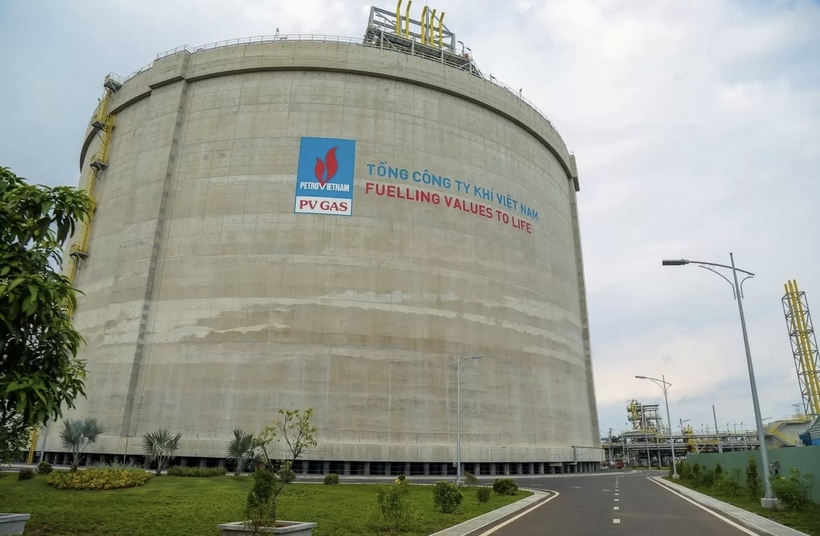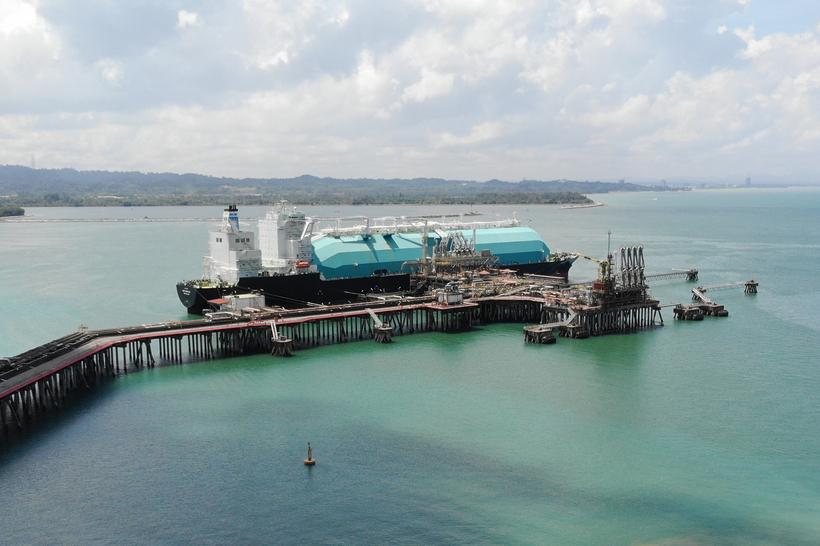
Travel trends 2026: The rise of ultra-personalised journeys
19:05 | 23/03/2025 23:18 | 12/12/2025Tourism
As global electricity demand continues to grow and the pressure to reduce CO2 emissions becomes more urgent, the world is facing a critical challenge: how to secure energy that is both reliable and sustainable. Countries are seeking solutions that can balance these dual priorities, and in this search, liquefied natural gas (LNG) has emerged as a key contender. Once regarded primarily as a transitional fuel, LNG is increasingly being recognized as a long-term pillar of energy security and an indispensable component of the global energy transition.
A stabilizing foundation for energy systems
For many nations, the pursuit of energy sustainability is complicated by the simultaneous rise in demand and the decline of traditional resources. Ezran Mahadzir, Chief Executive Officer of Petronas LNG, emphasized that Southeast Asia clearly reflects this dilemma. Rapid urbanization, accelerating industrialization, and population growth are driving up energy needs, while domestic natural gas reserves, which once formed the backbone of supply, are steadily dwindling.
“Renewable sources like solar and wind are clean, but their intermittent nature creates inherent limitations. You cannot guarantee that the sun will shine every day or that the wind will blow around the clock,” Mahadzir explained. “That is why LNG is playing an increasingly important role in ensuring reliable energy supply”.

Chief Executive Officer of Petronas LNG Ezran Mahadzir
According to him, LNG is not only a bridge connecting fossil fuels and renewables but also a fuel of the future. Its value lies in its ability to serve as a dependable baseload energy source, capable of balancing the grid and offsetting the intermittency of renewables. This stability, in turn, provides the foundation for sustained economic development and improved quality of life.
The numbers reinforce his point. SSI Research reported that global natural gas consumption reached an all-time high of 115 billion cubic meters in 2024, with the Asia-Pacific region driving much of this growth. Demand is projected to remain elevated through the 2024-2025 peak consumption season (October to March), particularly due to heating requirements in Europe and North America. Such figures illustrate that LNG has moved far beyond being a temporary solution, it is actively reshaping global energy dynamics.
Vietnam strengthens cooperation to expand its LNG market
In Vietnam, the growing reliance on LNG imports reflects both necessity and opportunity. Mahadzir observed: “Vietnam’s energy balance is showing a clear trend. Domestic supply is declining while demand for natural gas continues to rise, making LNG imports inevitable.” The commissioning of the Thi Vai LNG terminal marks a significant milestone in this process.
Vietnam’s National Power Development Plan VIII underscores the government’s commitment. By 2030, the country aims to have 22,400 MW of installed capacity from LNG power plants, accounting for nearly 15% of total national capacity. In terms of generation, combined domestic gas and LNG power is projected to produce 130.1 billion kWh, equivalent to 25.7% of total electricity output. These ambitious targets underline LNG’s role as a central pillar in Vietnam’s long-term energy planning.
SSI Research highlights the advantages for PV Gas, the state-owned enterprise leading the LNG market. Since 2023, PV Gas has operated the Thi Vai LNG terminal, the country’s first facility of its kind. Upcoming projects such as Nhon Trach 3 and 4 are expected to further boost demand, reinforcing PV Gas’s leadership position. While domestic shortages will persist until the Block B field is scheduled to come online in late 2027, LNG has already become an essential part of the energy mix.

Thi Vai LNG Terminal
To mitigate supply risks, PV Gas is actively expanding international partnerships. In April 2025, Petronas LNG delivered its first cargo to PV Gas at the Thi Vai terminal, a milestone that lays the foundation for deeper cooperation between the two companies. Prior to that, PV Gas signed an agreement with QatarEnergy LNG for the import of nearly 70,000 tons of LNG, also to be delivered through Thi Vai. In March 2025, PV Gas CNG signed a contract with Far Eastern Polytex Vietnam (FEPV), signaling further diversification and industrial applications of LNG and CNG in Vietnam.
These developments not only enhance Vietnam’s energy security but also demonstrate its ability to integrate into global LNG supply chains. By collaborating with international players, Vietnam is positioning itself as a serious participant in the LNG market while ensuring resilience in its domestic supply.
LNG: From a bridge solution to a long-term pillar
The trajectory of LNG in Vietnam and beyond suggests that it is moving decisively from being a temporary bridge fuel to becoming a structural pillar of energy systems. Its compatibility with renewables makes it indispensable in the near to medium term, as it enables the grid to absorb higher shares of intermittent solar and wind while maintaining reliability.

Petronas LNG Complex in Bintulu, Malaysia
At the same time, LNG supports emissions reduction compared with coal and oil, aligning with national and international commitments to carbon neutrality. While it is not emission-free, its relatively lower carbon intensity makes it a pragmatic choice in the transition period. For Vietnam, where domestic gas reserves are in decline, LNG provides an alternative that secures both economic continuity and environmental progress.
Looking ahead, Vietnam’s challenge will be to maximize the value of LNG. This includes scaling up infrastructure such as storage facilities and regasification terminals, ensuring cost competitiveness, and balancing LNG imports with the accelerated development of renewables. Strong partnerships with global suppliers, like Petronas and QatarEnergy, will remain critical to achieving these goals.
If Vietnam leverages this period effectively, LNG could become more than just a transitional solution. It has the potential to evolve into a cornerstone of the nation’s energy transition, bridging present needs with future aspirations, and underpinning both economic resilience and sustainability.

19:05 | 23/03/2025 23:18 | 12/12/2025Tourism

19:05 | 23/03/2025 23:04 | 12/12/2025Trade

19:05 | 23/03/2025 23:00 | 12/12/2025Society

19:05 | 23/03/2025 19:39 | 12/12/2025Trade

19:05 | 23/03/2025 19:37 | 12/12/2025News and Events